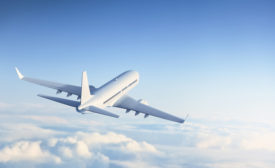Home » aviation industry
Articles Tagged with ''aviation industry''
FAA Administrator signals safety evolution
“It's about finding a problem, fixing a problem, and making sure it stays fixed."
October 13, 2015
Despite experience, crew of doomed plane made fatal errors
NTSB: 11 second delay was difference between life and death
September 10, 2015
Brady releases “RFID Integrated Labels for Flyable Asset Management” whitepaper
Report explores the expanded use and benefits of RFID tags in the aviation industry
April 6, 2015
Never miss the latest news and trends driving the safety industry
eNewsletter | Website | eMagazine
JOIN TODAYCopyright ©2024. All Rights Reserved BNP Media.
Design, CMS, Hosting & Web Development :: ePublishing



